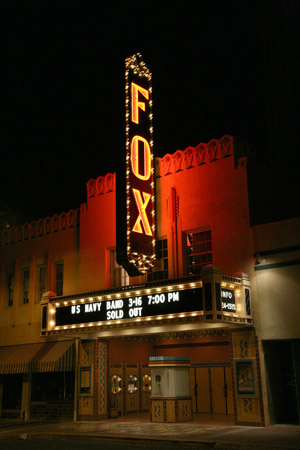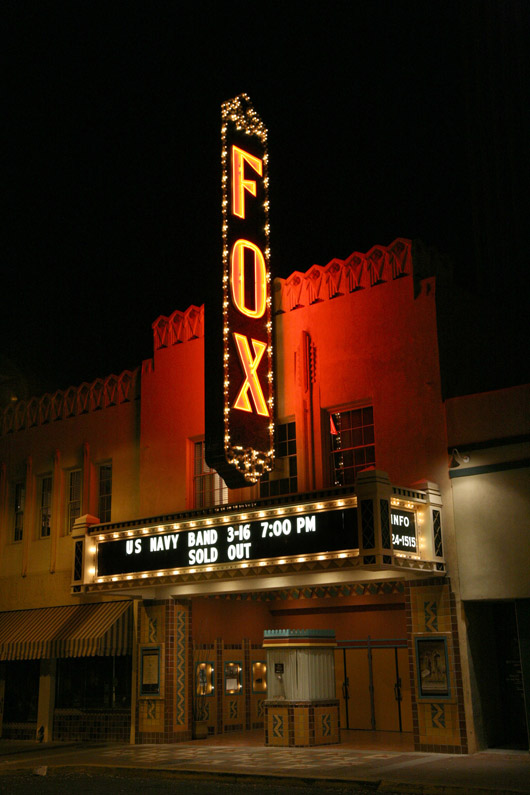
“They’re just so magical,” he said, noting they expressed a cheerfulness and exuberance about life that in some ways modern culture has lost. “I knew when I saw them that there was something special about Tucson.”
Decades later, about 75 percent are gone. No longer does a Godzilla-sized Marilyn Monroe entice travelers to a motel. The Ye Olde Lantern sign no longer lures Tucson foodies to one of the area’s fanciest restaurants in its day. Some have been destroyed. Others have been snapped up by collectors or hawked on eBay.
Most of those remaining are at risk. And Tucson is diminished because of it, Lozano said.
The city’s sign-code committee is now going over a proposed change in the law that would make it easier to save historic signs, but at its last meeting the group failed to agree on a recommendation to send to the City Council, instead scheduling a follow-up meeting next week.
When Tucson updated its sign code, many old signs were too big, too tall or too near the public rights-of-way to meet the new criteria. They were allowed to remain, but if they ever came down, even for repairs, they couldn’t go back up. Also, if the business changed use, the sign would have to come down.
Advocates point to the rusted-out, badly-aged “diving girl,” who, for 65 years, has beckoned visitors to the Pueblo Hotel and Apartments’ swimming pool as the poster child for sign purgatory.
She’s flat illegal since the use of the building changed to a lawyer’s office. The city’s sign code administrator, Glenn Moyer, acknowledged that, technically, if an administrator took over who was not sympathetic to historic signs, the diving girl – and any like her – could be ordered down.
Business owners often sacrifice to keep the signs. Since diving girl takes up all of the business’s allotment for signs, the Piccarreta Davis law firm can’t put its own sign out front. It still gets inquiries about vacancies. Like many older signs, restoring it would be expensive, but the law firm is willing to do it, if only it were allowed.
Likewise, Steve Fenton, who owns the long-empty Reilly Funeral Home on East Pennington Street, says he’d love to fix up the vintage 1920s neon sign that is original to the building.
“That sign is an integral part of the history of that building,” he said. Fenton said he’s unable to say how much work the sign will need, because to date it’s been a moot point.
“Historic signs are part of the historic fabric of Tucson, so it’s only logical that we should try to keep them in place,” Fenton said.
Bob Vincent’s Southwest Animal Health on North First Avenue stands in the shadow of a large boot, outlined in neon, with a fluorescent orange spur, which has marked the entrance to the business complex for more than 50 years. When it’s fixed up, it can be seen from blocks away, he said.
It worked when he moved in 17 years ago, but has fallen into disrepair. “I hate to see it all dilapidated,” Vincent said. “It makes my business look bad.”
City leaders, acknowledging the role the distinctive signs played in the rise of the Oracle-Drachman corridor, even put a 30-foot-tall neon sculpture of a saguaro in the median at the gateway of the old tourist court strip, as an homage to its history.
Still, the wheels of government turn slowly. It’s been two years since the City Council turned the job over to an ad hoc citizens’ committee in June 2009.
The group identified about 200 signs that might qualify as historic. Since then, they had many a spirited debate about what criteria to use to keep out signs without historic value, said Jonathan Mabry, the city’s historic preservation officer.
Take the No-Tel Motel. The naughty little witticism might lend a sense of place, but the sign itself isn’t anything special, Mabry said.
What they ended up agreeing to was a special designation for signs installed prior to 1961, as well as transitional signs installed between 1961 and 1974. They would have to meet nine criteria for automatic approval, from having neon or incandescent lighting, to being non-rectangular and exemplifying historic heritage. Those that don’t meet all nine can still petition for the designation.
Business owners looking to incorporate new text, such as their name, into a sign may be able to do so, as long as it doesn’t change the sign’s character.
No longer would the historic signs count toward the business’ signage area, allowing them to put up their own sign.
Two provisions ran into some turbulence with sign-code advisers, who have long fought against visual blight – letting historic signs be relocated to an area with a concentration of historic signs allowing replicas as long as they are installed on the original premises. Commissioners feared those provisions would reopen the door to the types of signage that in the 1970s gave Tucson brief notoriety as having the nation’s ugliest street – Speedway.
But advocates of historic restoration say that, in a sea of plastic uniformity, there is a need to preserve examples of quirky American folk art.
Sharon Chadwick told the sign code advisory committee that losing historical elements will hurt. “You’ll become like a person who doesn’t have a memory.”
But Mark Mayer, a longtime billboard opponent, objected that rather than being narrowly focused on just the most worthy signs, he thought the law would “open a wide door where grossly oversized signs” could be restored, relocated or replicated.
Mayer urged dumping the measure, and instead making a list of signs worth keeping.
Mabry said a list wouldn’t work. “That’s exactly the kind of approach we should not take,” he said, adding that what makes a sign “historic” is not nostalgia or even personal opinions about its aesthetic.
The sign committee will meet again May 19 to discuss the change and forward their take on the proposal. It could go to mayor and council for action possibly in June.
___
Information from: Arizona Daily Star, http://www.azstarnet.com
Copyright 2011 Associated Press. All rights reserved. This material may not be published, broadcast, rewritten, or redistributed.
AP-WF-05-12-11 0857GMT
ADDITIONAL IMAGE OF NOTE


